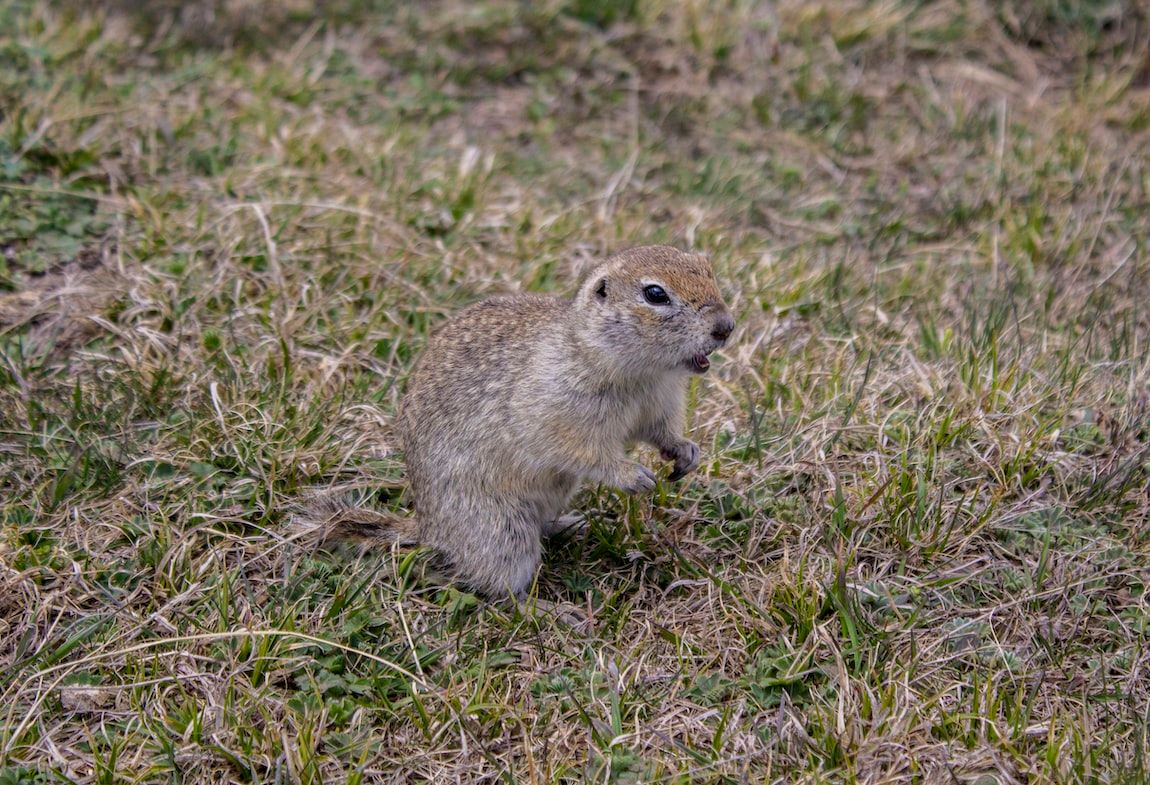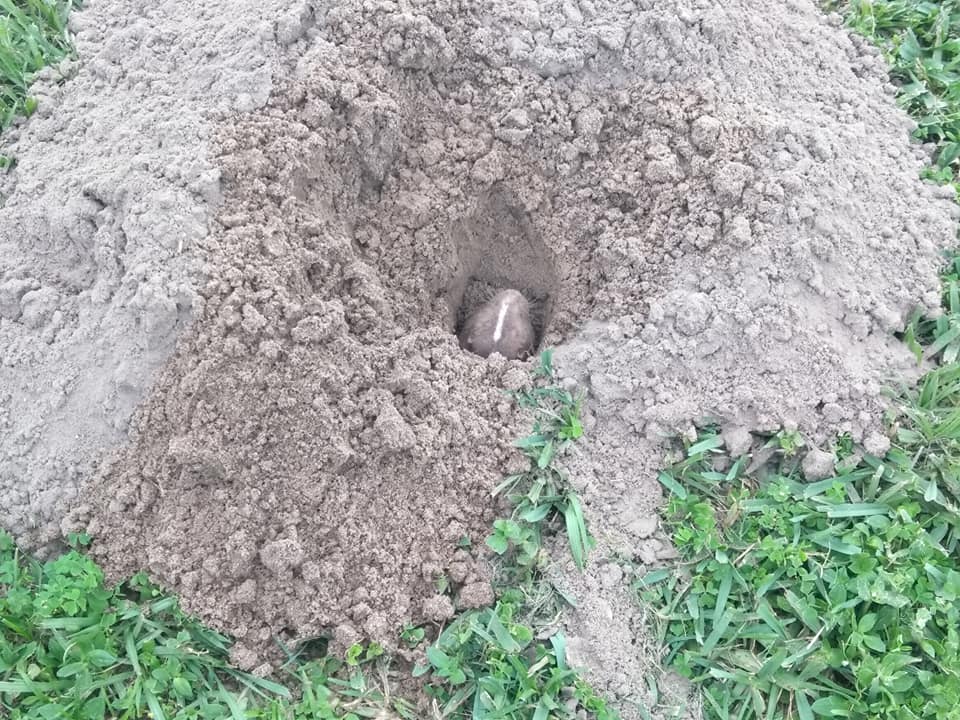Your battle with gophers, also known as pocket gophers, will happen underground because these tiny rodents rarely venture above the ground. Gophers target moisture-rich tree and plant roots, causing intense damage within a few hours and creating unsightly holes in yard.
Therefore, for your plants and yard’s aesthetics, you must get rid of these herbivorous rodents. Your gopher control success rates depend on your yard or garden size, plant types growing there, and the surrounding areas.
This post examines the various things that attract gophers to your yard and how to get rid of gophers in your yard and garden.
What Attracts Gophers To Your Yard
Before addressing the gopher problem in your yard or garden, what is causing this issue in the first place? What is in your yard or garden that makes it attractive to gophers?
Related Post
- How To Get Rid Of Raccoons In Your Yard
- How To Get Rid Of Groundhogs In Yard And Garden
- How to Get Rid of Moles in Your Yard
Below are the things in your yard gophers find attractive.
1) Vegetation
Being herbivorous, gophers primarily consume plant roots, bulbs, and underground portions of plants. These rodents are attracted to a variety of plants, including grasses, herbs, flowers, and vegetables. Therefore, if your yard has a lot of these plant types, it can make it more appealing to them.
Gophers are particularly attracted to plants rich in nutrients. They also prefer places with thick vegetation because it offers protection and cover. Furthermore, your yard or garden will be appealing to gophers if your yard has a variety of plants with underground food sources such as roots and bulbs.
Due to their underground storage structures, flower bulbs like tulips, daffodils, and lilies appeal to gophers. Also, some herbaceous plants with edible roots or tubers, such as dahlias or hostas, can attract gophers.
Moreover, Gophers may target ornamental plants with fleshy roots or underground storage structures, such as irises or daylilies.
They are also fond of grasses, including lawns, meadow grasses, and ornamental grasses.
Also Read:
2) Moisture
Gophers don’t require large bodies of water but need moisture to survive. Therefore, water sources in your yard or garden, like ponds, streams, or irrigation systems, can make your yard more appealing to gophers.
If you frequently water your yard or install an irrigation system, you will create a moist environment gophers find attractive. In addition, if your area receives plenty of rainfall, the wetter conditions can make the soil easier for gophers to dig through and create burrows.
3) Soil Conditions
Gophers prefer burrowing and foraging in some soil types. For instance, they are adept at digging through loose and well-drained soil types. These rodents will likely construct burrows in your yard if you have sandy or loamy soils that are not overly.
Also, nutrient-rich soil supports healthy plant growth, which in turn attracts gophers looking for food. Additionally, soil with moderate moisture levels is easier for gophers to excavate and navigate while creating tunnel systems.
So, while compacted soil is not suitable for plant growth, you won’t have to deal with gophers with this kind of soil in your yard or garden.
4) Lack of Predators
A predator-free yard or garden sounds pleasant because who wants snakes, owls, hawks, or foxes roaming around their home? However, there is a downside to this. Gophers are more likely to inhabit areas where they face minimal threats from predators.
5) Shelter
Adequate cover gives gophers a proper environment to create extensive tunnel systems undisturbed. So, suppose your garden or yard is covered by dense vegetation comprising shrubs, bushes, or tall grasses.
In that case, gophers will have cover and protection from predators and the freedom to move around unnoticed.
In addition, if your yard has sections with little human activity or areas left untouched for a while, gophers may find them attractive for establishing their burrows.
How To Get Rid Of Gophers In Your Yard And Garden
Now that you know what brings gophers to your yard or garden, let’s get rid of these destructive rodents.
1. Trapping
With traps, you can either use live traps or kill traps; the choice is ultimately yours and how you choose to handle gophers. Kill traps are effective, rapid but inhumane, so you may want to consider live traps because it means not killing the gophers or disposing of their carcass.
On the other hand, go for live traps if you prefer an effective, humane solution that doesn’t entail using poisons in your garden or yard. However, it is time-consuming, and you will have to place and replace the traps manually.
Kill traps for gopher control include choker, cinch, and harpoon traps. In contrast, live traps for gophers consist of wire mesh or metal cages with a door mechanism that allows gophers to enter but not escape.
Increase your traps’ effectiveness using baits like fresh vegetables, such as carrots or sweet potatoes, or commercially available gopher attractants. Regularly monitoring the traps is also essential as it ensures you release any live-caught gophers when using live traps or remove any trapped gophers if you’re using lethal traps.
2. Underground Barriers
Underground barriers create a physical barrier that will help prevent gophers from burrowing into specific areas of your yard or garden. However, the effectiveness of your barrier will depend on the material.
Hardware cloth or mesh materials are typically made of galvanized wire and have small openings that prevent gophers from squeezing through.
Use a shovel or digging tool to dig at least 2 feet deep trench along the perimeter where you plan to erect the barrier. This will ensure that gophers cannot burrow underneath it.
After that, unroll the hardware cloth or mesh and place it in the trench, making sure the barrier extends above the ground level by at least 6 inches to prevent gophers from going over it.
Bend the excess material outward to create a lip facing away from the protected area. Fill the trench with soil, packing it tightly to secure the barrier.
Also, don’t leave your barrier unattended. In that case, regularly inspect the barrier for signs of damage or gaps, and repair or reinforce it as needed to maintain its effectiveness.
3. Natural Repellents
Go through your pantry, and you will likely find some natural ingredients to help you get rid of gophers. Natural repellents will make your garden or yard unappealing to gophers, thus keeping them away.
Some effective gopher repellents include castor oil for its laxative effect and terrible taste to gophers and garlic and chili pepper for its strong odor.
Some plants have repellent properties for gophers. For example, gophers tend to avoid plants from the Allium family, such as onions, garlic, and chives. So, plant these species or similar deterrent plants around vulnerable areas to deter gophers.
Alternatively, repel gophers with vibrating or ultrasonic that emit vibrations or high-frequency sounds to make the environment uncomfortable for gophers.
4. Predator Urine
Gophers do not need to see their predators to run away; the scent of predators is enough to deter them. Sprinkle commercially available predator urine or predator scent granules around the yard to create the impression of predator presence.
However, keep in mind that the effectiveness of this method may vary, and gophers can become accustomed to the scent over time.
5. Plant Selection
The type of plants in your garden or yard also plays a role in keeping gophers away. Choosing plants gophers don’t enjoy eating helps protect your garden.
Some plants are less appealing to gophers due to their taste, scent, or toxic properties. These include plants from the mint family (e.g. lavender, thyme, rosemary), daffodils, agapanthus, salvias, and some ornamental grasses. Incorporating these plants into your landscape can make it less attractive to gophers.
Gophers are also less likely to tunnel near plants with sharp or prickly foliage. Therefore, consider planting thorny bushes like roses, barberries, or holly bushes around vulnerable areas to create a deterrent.
Additionally, if gophers are a significant concern, avoid planting highly attractive bulbs such as tulips, lilies, or crocuses. Instead, opt for less appealing options like daffodils, snowdrops, or alliums. Also, plant in raised beds or containers to create a physical barrier against gophers.
6. Predatory Animals
As mentioned earlier, the absence of predators can make your garden or yard pretty attractive to gophers, so why not use them to keep these rodents away?
Predatory animals known to prey on gophers include Gopher snakes, rattlesnakes, domestic cats, foxes, dog breeds (such as terriers), and birds of prey like owls, hawks, and falcons.
Create a diverse and natural habitat in your yard to attract a variety of beneficial wildlife, including predators of gophers. This includes providing food, water sources, and suitable shelter, such as brush piles or native plantings.
Attracting and maintaining predatory animal populations requires careful consideration of local regulations, the ecosystem, and the safety of the predators and your property.
Therefore, consult with local wildlife experts or conservation agencies to understand the proper practices for attracting and supporting predator populations in your area.
Conclusion
Handle gopher problems in your garden or yard with the methods above. However, If the gopher problem persists, contact a professional pest control service specializing in gopher removal for expert advice and advanced elimination methods.

Hey there, I’m Derek Schew, a writer for Lawnholic.com, where we cover everything and anything related to lawns. As someone who’s spent countless hours tending to my own lawn, I’m passionate about sharing my knowledge and helping others achieve the perfect yard. From lawn care tips to product reviews, I’m committed to providing our readers with the most accurate and up-to-date information available. So whether you’re a seasoned lawn enthusiast or just getting started, I invite you to join our community and discover the joys of a lush, green lawn.


